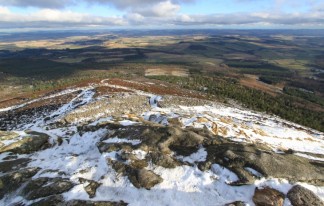Expressions of Power in the Post-Roman North: A Comparative Approach
This project examined how power was manifested physically in the landscape and how these manifestations in Scandinavia, Iceland, Scotland and Ireland changed during the course of the Early Medieval period. This was achieved by thorough comparison between the archaeological sources from these regions. The project placed great emphasis on studying and trying to define how settlement hierarchies were expressed in these different regions. The focus also aimed to identify and characterise the residences of kings and the aristocratic farms and, if possible, to distinguish a settlement hierarchy for each region. Furthermore, the spatial relationship between residences and seats of kingship, ie settings for the ritual of kingship (hill-forts and assembly places), was examined through time.

The study mainly dealt with how and to what extent different kinds of lordship and kingship affected the design and social organization of contemporary settlement structures and farmland. It proposed that a comparison of the documented settlement structures and field systems from the Late Middle Ages and beyond, where the form of lordship and the ownership relations are known, with their Early Medieval counterparts in the three regions studied, to shed light on these important issues.
